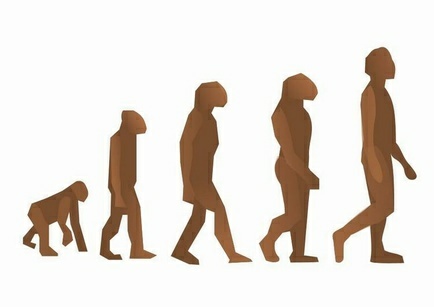It is often envisioned that humans could return to a simpler, more rural way of life and thereby live a more environmentally friendly existence. This is not only unrealistic, but in examining the numbers it becomes clear just what a predicament our human population growth has put us in.
First let’s consider the raw numbers regarding human impact on the planet and see where that leaves us. There are about 57,500,000 square miles of land available on the entire surface of the earth. There are also about 6,671,226,000 people on the planet as of July 2007. A simple calculation shows that this results in about 116 people per square mile on the entire surface of the earth.
At this point it will be useful to examine some of the selection pressures that will also affect a species.
The obvious ones are the need for resources to maintain the day-to-day activities necessary for basic survival and the need to locate and contend with available mates for reproduction. Within the context of reproduction, controls have evolved to ensure that equilibrium exists between the number of produced offspring and the number that will likely reach adulthood. This is an important element in the entire process since being too successful will increase interspecies competition and risk survival just as surely as inadequate reproduction would.
In exploring some of the biological issues surrounding selfishness and altruism, invariably the philosophical issue of selfishness surfaces. Ayn Rand has argued that selfishness is a virtue because it is the rational and principled concern with one’s own well-being and is necessary to lead a healthy, purposeful, and fulfilling life. It isn’t my intent to deal with Ayn Rand, but rather to examine the sense that many people have regarding these concepts.
The only problem with Ayn Rand’s definition is that the meaning of “selfishness” was manipulated to become “self-interest”. According to the dictionary definition, “selfishness” is “extreme or exclusive self-interest” which is also the commonly understood form of the word.
In the previous post we introduced the idea that indifference was the primary action at work at the biochemical and cellular levels.
At this level, it would be hard to express any survival strategy beyond probabilistic, since reproduction is asexual with those cells that have the proper attributes, being able to dominate an environment in a short period of time. Similarly, it is also an environment that is subject to genetic “plagiarism” whereby novel combinations or sources of genetic information may be acquired directly through mechanisms like conjugation. The process of conjugation results in the transfer of genetic materials from a donor cell to that of the recipient.
It appears that there is still a bit of a controversy and disconnect between the ideas in evolution relating to selfishness, cooperation, and altruism. In this series of articles, it is my intent to explore each of these ideas and demonstrate how they may arise and the role they play in improving the evolutionary lot of various species.
Interestingly enough, all these terms are only meaningful within the context of cooperation, since a selfish individual is one that acts against the cooperative group and an altruistic individual is one that willingly acts for the cooperative group (selflessness). Given these “loaded” terms and the emotional concepts they convey, it is useful to consider the actual biology at work.
There is no question that humans are unique among living things in possessing a rich communications vehicle like language. However, by itself, this is insufficient to explain why such a thing should exist, so it might be useful to examine what is it that makes humans unique among animals?
Often we hear arguments about consciousness, or intelligence, or some other element, but to my mind these are too vague to be of much use, since we often see similar capabilities among animals that do not possess a language.
 Placebo Buttons?
Placebo Buttons? The Development Of Social Monogamy In Mammals
The Development Of Social Monogamy In Mammals Easy Answers To World Problems
Easy Answers To World Problems The Precautionary Principle Review
The Precautionary Principle Review







